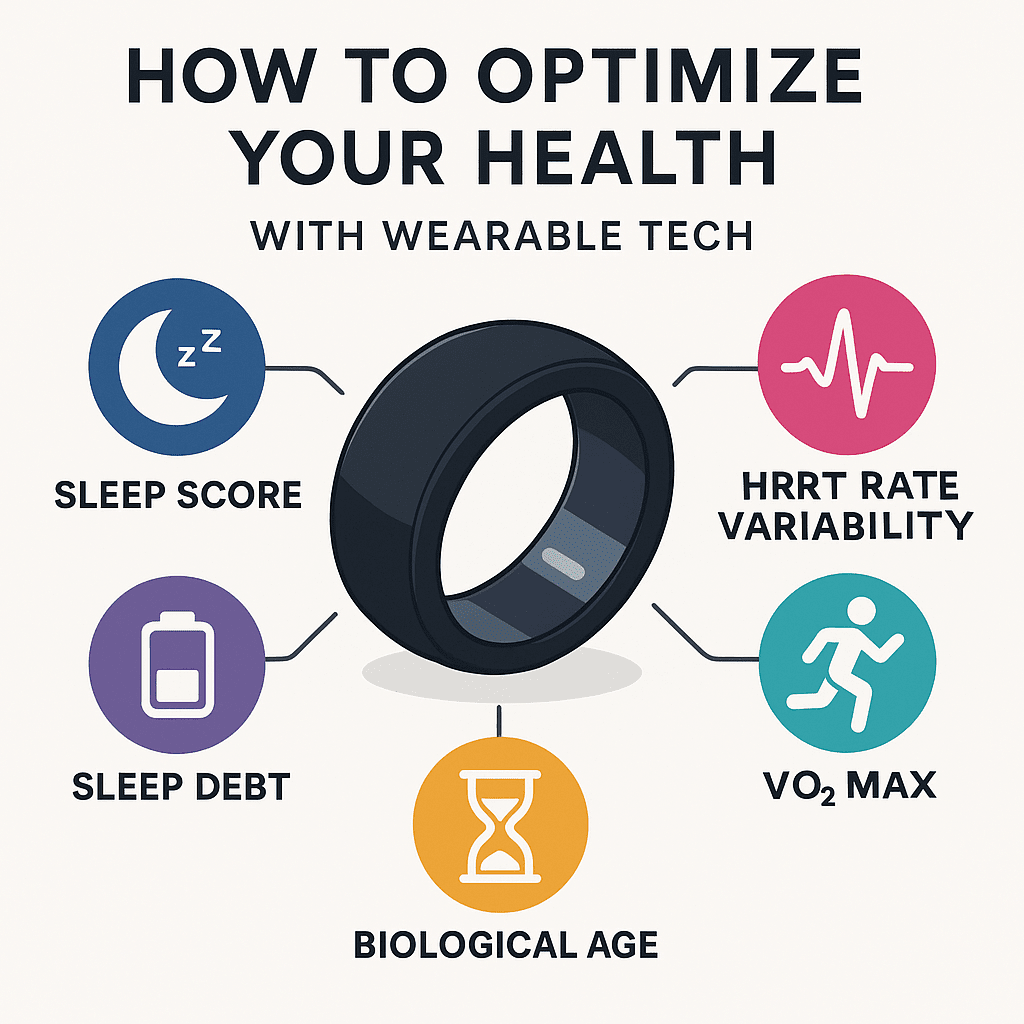
Wearable health trackers and advanced wearable analytics put powerful biometric insights at our fingertips—no PhD required. From monitoring your sleep cycles to gauging cardiovascular resilience, these devices serve as a personal recovery tracker and guide smarter habits. In this article, we’ll explore the top five metrics any non-medical user can monitor with a wearable tracker. I’ll also share how I leverage the Ultrahuman Ring to keep tabs on these key health indicators.
Sleep Score: The Cornerstone of Recovery
Your Sleep Score (typically on a 0–100 scale) blends total sleep duration, deep-sleep time and sleep efficiency—the percentage of time actually asleep. Tracking this through your wearable’s sleep analytics helps you see how well your body recovers each night. A solid Sleep Score supports mood regulation, memory consolidation and immune health. To boost yours, wind down 15 minutes earlier, charge your ring or tracker before bed, and keep your phone or hub nearby for uninterrupted data capture. On my Ultrahuman Ring, I’ve seen that a +7-point jump in Sleep Score translates into clearer mornings and steadier energy all day.
Sleep Debt: A Simple Ledger of Rest
Sleep Debt tallies the hours you’re “owed” relative to your ideal nightly rest—think of it like a bank overdraft of sleep. As part of your wearable analytics dashboard, this metric shows how much extra rest you need to function at your best. Carrying a larger Sleep Debt (e.g., +3–4 hours) leaves you groggy and slows recovery. The remedy? Add just 15 minutes to your nightly rest until you zero out the deficit. With my Ultrahuman Ring’s built-in recovery tracker, I aim to keep Sleep Debt under one hour by mid-week to maintain peak focus and low stress.
Heart Rate Variability (HRV): Your Stress-Recovery Gauge
Heart Rate Variability measures the tiny millisecond differences between consecutive heartbeats—a higher HRV signals a more adaptable, resilient nervous system. Wearables from Oura to Garmin capture this metric during sleep or rest, and it’s at the heart of any serious wearable analytics suite. When HRV dips below your norm, it’s a cue to swap a hard workout for gentle yoga, a light swim or guided breathing. Tracking HRV on my ring has helped me avoid burnout by fine-tuning training intensity and maximising my recovery tracker insights.
VO₂ Max: The Gold-Standard of Cardiovascular Fitness
VO₂ Max represents the maximum volume of oxygen your body can consume during intense exercise—an established marker of aerobic capacity. Many smartwatches and rings estimate VO₂ Max from your heart rate and movement patterns, leveraging wearable analytics to guide performance improvements. To raise yours, add two weekly “Zone 2” sessions (brisk walks, easy jogs or steady cycling) at about 60–70% of max effort. Since focusing on Zone 2 training, I’ve improved my VO₂ Max on the Ultrahuman Ring by 4 points, translating into easier uphill hikes and longer golf rounds.
Biological Age (Ultra Age): Your Personalized Pace-of-Ageing
“Biological Age” algorithms combine sleep, HRV, pulse waveform and other recovery signals to estimate how quickly you’re ageing physiologically versus chronologically. On the Ultrahuman Ring, this shows up as “Ultra Age”—a composite of Brain Age, Pulse Age and (soon) Blood Age. If your biological age runs younger than your real age, you’re on track; if it’s older, it’s a prompt to tweak habits. I check my Ultra Age weekly using the ring’s wearable analytics portal and focus on whichever sub-age is outpacing the others—sleep, pulse or brain—to stay ahead in my recovery tracker.
Conclusion
You don’t need a medical degree to turn wearable data into better health. By monitoring Sleep Score, Sleep Debt, HRV, VO₂ Max and Biological Age, you’ll simplify your biohacking journey and make meaningful improvements in recovery, performance and longevity. While these metrics are available on many devices—from smartwatches to rings—I use the Ultrahuman Ring for its seamless tracking, robust wearable analytics and integrated recovery tracker. Start by picking one metric this week, apply the simple tweak above, and watch how small changes yield big gains.
Which metric will you tackle first? Let’s chart your path to optimised health—one smart data point at a time.







